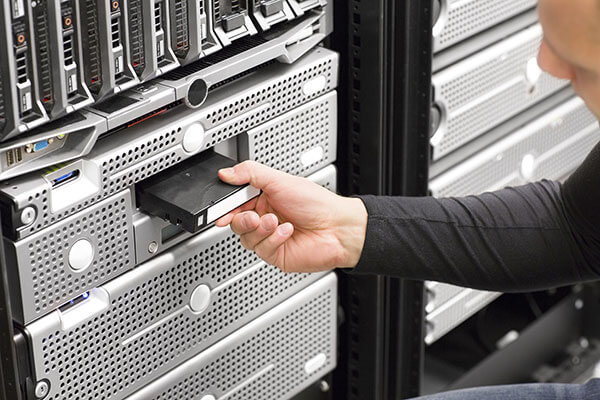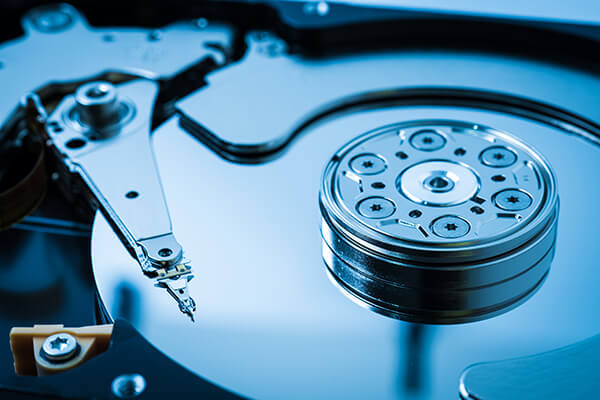An entire generation has grown up without rewinding a home movie or recording the summer's Top 40 hits on cassettes. VHS tapes and cassettes are no longer cutting-edge tech, and instead have become period props in movies to conjure up a world of retro cool. From the advent of the computing industry in the 1950s through the 1980s, tape dominated memory technology. Then hard drives and solid-state drives became the memory medium of choice because of their much faster retrieval speed and shrinking size.
However, the old magnetic tape that formed the core of those once-pervasive technologies is making a comeback as many CIOs and IT managers look to diversify their storage needs in the disk-driven world. Some wonder if tape can do the trick fast enough for our real-time, artificial intelligence-driven world and others even believe using tape is more energy efficient. Tape isn’t something associated with IT modernization trends such as hyper-converged infrastructure or cloud native.
“There was a time when every small business had a tape backup or a server sitting in the closet with shelves of tape,” said Mike Kahn, a 40-plus year computer industry veteran with experience as an analyst and engineer. “That cost money and space to store, so people got away from it at an everyday level, but…look at who has become interested in tape.”

Research labs and tech giants like Google, Microsoft and Amazon are moving toward multiple data storage solutions that rely heavily on the cloud, which uses spinning hard drives and solid-state drives, along with magnetic tape, a material that dates back more than 60 years. Recent tape innovations have decreased its size and increased its storage capabilities. This combined with the large amounts of data produced every second has driven tape back onto the world stage, re-establishing it as a viable option to augment more cutting edge data backup and storage technologies.
Magnetic Tape for Big Data Storage
The Oak Ridge National Laboratory is home to two of the world’s most powerful supercomputers, Titan and Summit. Its data systems uses disk and tape technology to help researchers make startling new discoveries. Titan can compute more than 27,000 trillion calculations per second, and researchers utilize the supercomputer’s massive power to explore solutions for areas as diverse as biofuels, neurodegenerative diseases, and nuclear power. With such a large computational input and output of data, Oak Ridge relies on a hybrid data storage system to best serve its multifaceted needs.
“We build these massive storage systems that are bleeding edge, and when you build a bleeding edge system, you are going to bleed,” said Dustin Leverman, a Storage Team Lead for the Oak Ridge Leadership Computing Facility.“We basically build these things for performance and capacity, but reliability, even though we strive for that as well, isn’t something that can be guaranteed.”

These supercomputers primarily run off more than 50,000 spinning disks that service user requests immediately. The Oak Ridge teams regularly push those computations to a tape drive where it writes data on thousands of magnetic cartridges that are then placed by robotic arms in slots for safekeeping and later access. Historically, tape’s latency has been a barrier in the fast-moving IT-world of artificial intelligence, but new hybrid-tape innovations might offer the solution.
Oak Ridge Leadership Computing Facility (OLCF) has utilized tape technology for decades but increased its effectiveness significantly over the last 10 years by combining data storage technologies. The lab saw a need for faster retrieval of data stored on tape, so they introduced a disc cache that holds onto the recently retrieved tape data.
“Tapes are really slow,” said Leverman. “A robot has to pick up a tape, and then load not just one tape, but four tapes to be able to read any data, so there’s a lot of latency involved in retrieving any data if it's on tape. But if it’s in the cache, we call it ‘hot’ meaning users can retrieve it relatively quickly.”
By introducing a disk cache that temporarily stores commonly or recently requested tape data, the team dramatically improved data retrieval speeds from their tape archive.
“You really need a highly reliable place to store your crown jewels,” said Kevin Thach, Group Leader for the OLCF’s High-Performance Computing and Data Operations group. “It is a true archive, not really a backup, but a true archive.”
Tape’s Cost Benefits
Thach credits tape’s affordability for its continued presence. His team recently crunched the numbers, and by archiving with tape instead of switching to a disk-only solution, they are saving “millions” in energy costs.

Users are creating more data than ever before, and server hosts are looking for affordable ways, including cloud computing and tape back-up, to house it. Robert Ciotti, Supercomputing Systems Lead/Architect in the NASA Advanced Supercomputing Division, said his team uses tape extensively for long term storage, because of its cost benefits for his massive storage needs.
“Historically, we have doubled our archive storage capacity every couple of years based on continued increasing demand from NASA applications and missions,” Ciotti said. “I don’t see that changing – this is the big data wave and it hit us long before it was widely recognized in industry. We are now at 100’s petabytes soon to be exabyte in the next few years – again, probably doubling every few years”
With low-cost benefits and reliability, hybrid data storage systems combine the newer cloud solutions with the old. An article published by the Data Technology Center noted that formulating data storage solutions isn’t about choosing one medium or another but matching different multiple data solutions to various needs.
Data Storage Needs Keep Growing
Tape won’t replace or disrupt current disk trends, but the tech might find a revived place in a company’s storage hierarchy. Still, there’s skepticism about tape’s ability to remain relevant as IT departments modernize to cloud technologies.
“Data storage needs are ever-expanding as companies move from gigabytes to terabytes of data, and beyond,” said Bala Kuchibhotla, general manager of database services at Nutanix, which helps companies and organizations connect their IT systems to public and private cloud computing.
“Tape’s revival heavily relies on IT managers’ needs to fill a particular gap in the data storage needs.”

He said managers must weigh their options in assessing if tape’s cheap costs outweigh its slow retrieval speeds.
“If current disk technologies are not economical, it leads to either further innovation in disk technologies that can make them denser and cheaper, or people will resort to magnetic tape innovations that fit in today’s need,” said Kuchibhotla.
He predicts any revival in tape storage will be short lived because disk technology continues to improve. And as IT departments modernize their enterprise data systems with virtualization and cloud computing capabilities, integrating tape technologies could become increasingly more cumbersome.
Tape Innovation Will Continue
In 2015, the Information Storage Industry Consortium (INSIC) published a 10-year report that signals the continued use and proliferation of magnetic tape. The consortium, which is made up of 65 corporations, universities, and government organizations, highlighted the low costs of tape, but also that it will keep doubling its capacity every two years. This would continue to make storage more efficient, and further reduce costs.
Every few years, magnetic tape technology improves, and more data can be saved on a smaller amount of stronger tape. Thach, for one, sees a solid future for the old reliable tech. He said if prices for flash or disks don’t decrease, tape will continue to attract the interest of the world’s biggest tech companies and researchers.
“People have been saying for decades that tape is going to die, and it doesn’t,” he said.
As companies continue to modernize and expand their multi-memory data storage systems, time will tell if tape technology will continue filling gaps or become another technology buried in the dust bin of abandoned technologies.
Jacob Gedetsis is a contributing writer. His work has appeared in The Kansas City Star, The Post Standard and The Plain Dealer, among others. Find him on Twitter @JacobGedetsis.
© 2019 Nutanix, Inc. All rights reserved. For additional legal information, please go here.
